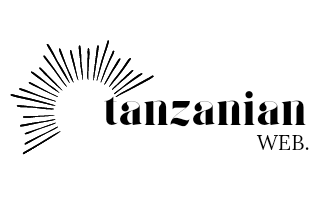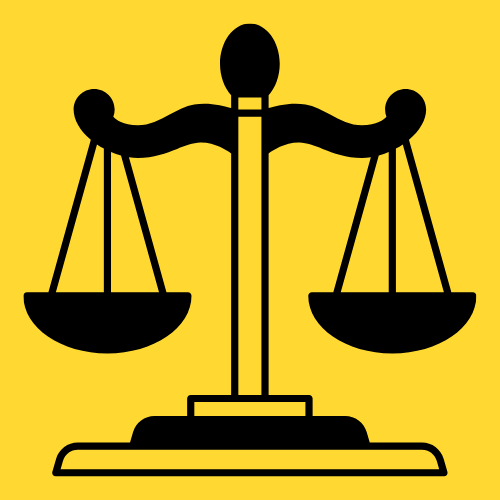“200”, Aptitude Test
Questions and Answers for Sailor II – Tanzania Ports Authority (TPA).
ABSTRACT
This collection of 200 multiple-choice
questions is designed to prepare candidates for the SAILOR II aptitude test in
maritime sector (TPA). The questions cover all essential competencies required
for the position, including wheelhouse and accommodation cleaning, chipping and
painting operations, rescue boat maintenance, lookout watch duties, buoy and
mooring chain operations, hydrographic survey assistance, cargo handling and
lashing techniques, and tower assembly work. Drawing from international
maritime standards including SOLAS, STCW, and MARPOL conventions, the questions
test practical knowledge of navigation principles, safety procedures, equipment
operation, emergency response protocols, and marine environmental protection.
Each question features a balanced answer choices to prevent pattern
recognition, with topics ranging from basic seamanship and rope work to
advanced technical subjects like stability calculations, communication
procedures, and regulatory compliance.
Prepared by Sailors and compiled by
Johnson Yesaya Mgelwa.
A lawyer stationed in Dar-es-salaam.
0628729934.
Date: June 1, 2025
Dear applicants,
This collection of questions and answers
has been carefully prepared to help all of you to understand the key areas
tested during the interview. The goal is to provide a useful, and practical
study guide so you can all perform confidently and fairly in the selection
process. I wish you the best of luck, and may this resource support you in
achieving success!
Warm regards,
Johnson Yesaya Mgelwa
For Personal Use by Applicants Preparing
for Sailors II interview at Tanzania Ports Authority (TPA).
ALL
QUESTIONS ARE COMPILED TOGETHER.
1. What is the primary purpose
of a wheelhouse on a vessel?
A) Storage of navigation equipment B) Crew accommodation area C) Navigation and
ship control D) Engine room monitoring Answer: C
2. When performing lookout
watch, which factor is LEAST important for effective observation? A) Weather conditions and visibility B)
Time of day or night C) Personal comfort and fatigue D) Traffic density in the
area Answer: C
3. During chipping and painting
operations on the main deck, what should be done first? A) Apply primer coating immediately B)
Remove loose paint and rust C) Check weather conditions only D) Prepare
painting equipment only Answer: B
4. Which type of rope is most
commonly used for mooring operations?
A) Polypropylene synthetic rope B) Natural fiber manila rope C) Steel wire rope
only D) Cotton braided rope Answer: A
5. What does CSEE stand for in
maritime qualifications?
A) Certificate of Safety Equipment Examination B) Certificate of Secondary
Education Examination C) Certified Ship Emergency Examination D) Certificate of
Seaman Employment Examination Answer: B
6. During hydrographic
surveys, manual work typically involves: A) Operating electronic navigation systems B) Handling
survey equipment and data collection C) Managing vessel communications only D)
Supervising other crew members Answer: B
7. When assembling new buoys,
the most critical consideration is:
A) Paint color and visibility markings B) Structural integrity and stability C)
Cost of materials used D) Speed of assembly process Answer: B
8. The International Load Line
Convention regulates: A)
Maximum cargo weight per container B) Minimum freeboard for vessel safety C)
Crew working hours at sea D) Navigation equipment requirements Answer: B
9. Which knot is most suitable
for securing cargo lashing?
A) Bowline knot for security B) Clove hitch for adjustment C) Trucker's hitch
for tension D) Figure-eight for stopping Answer: C
10. Basic Safety Training
includes all EXCEPT: A)
Personal Survival Techniques Course B) Fire Prevention and Firefighting C)
Advanced Navigation Planning D) Elementary First Aid Training Answer: C
11. When changing buoy mooring
chains, the primary safety concern is:
A) Weather conditions and sea state B) Chain weight and handling equipment C)
Buoy identification and marking D) Navigation traffic in area Answer: A
12. The term
"accommodation" on a vessel refers to: A) Cargo storage compartments B) Living
quarters for crew C) Navigation equipment spaces D) Engine room facilities Answer:
B
13. During loading operations,
weight distribution should:
A) Be concentrated in center areas B) Follow the vessel's loading plan C)
Prioritize speed over balance D) Consider only cargo value Answer: B
14. A rescue boat must be
inspected: A) Only when
damage is reported B) According to regulatory schedule C) Before each voyage
departure D) When weather conditions change Answer: B
15. Which tool is essential
for proper rope splicing?
A) Mechanical wire cutter B) Sharp marlinspike or fid C) Electric heating
element D) Chemical bonding agent Answer: B
16. The main purpose of ship's
lookout is to: A) Monitor
engine performance B) Observe and report hazards C) Control vessel speed D)
Manage cargo operations Answer: B
17. When painting in marine
environments, which primer type is preferred? A) Water-based acrylic primer B) Oil-based alkyd primer C)
Zinc-rich epoxy primer D) Latex rubber primer Answer: C
18. Proper lashing technique
requires: A) Maximum
possible tension always B) Uniform distribution of forces C) Minimum material
usage D) Quick installation methods Answer: B
19. Hydrographic survey
accuracy depends on: A)
Survey equipment calibration B) Weather conditions only C) Vessel speed
maintenance D) Crew experience level Answer: A
20. Which document is required
for Basic Safety certification?
A) University engineering degree B) Medical fitness certificate C) Previous
maritime experience D) Language proficiency test Answer: B
21. Tower assembly work
requires understanding of:
A) Electrical engineering principles B) Structural engineering basics C)
Advanced welding techniques D) Computer programming skills Answer: B
22. The most dangerous aspect
of deck maintenance is:
A) Chemical exposure from paints B) Working at heights safely C) Heavy
equipment operation D) Weather condition changes Answer: B
23. Cargo unloading sequence
should be planned to: A)
Minimize labor costs B) Maintain vessel stability C) Reduce time in port D)
Satisfy customer preferences Answer: B
24. When standing lookout
watch, reports should be:
A) Made only for emergency situations B) Detailed and frequent C) Clear,
accurate, and timely D) Recorded in personal logbook Answer: C
25. Buoy maintenance typically
involves: A) Complete
replacement every season B) Regular inspection and repair C) Painting for
aesthetic purposes D) Relocation to new positions Answer: B
26. The STCW Convention
establishes: A)
International cargo handling standards B) Standards for seafarer training C)
Port facility security requirements D) Environmental protection regulations Answer:
B
27. Mooring chain inspection
should check for: A)
Paint condition and color B) Link wear and deformation C) Chain length accuracy
D) Manufacturer's markings Answer: B
28. Wheelhouse cleaning
requires special attention to:
A) Navigation instrument protection B) Decorative appearance only C) Chemical
cleaning agents D) Rapid completion time Answer: A
29. During rope work, the
working load limit is: A)
Maximum weight before breaking B) Safe working capacity C) Minimum recommended
load D) Average load during operation Answer: B
30. Survey equipment handling
requires: A) Specialized
technical training B) Careful and precise operation C) Maximum speed efficiency
D) Minimal crew involvement Answer: B
31. Emergency response during
cargo operations involves:
A) Continuing work to meet deadlines B) Immediate work stoppage procedures C)
Notifying management only D) Documenting incident details Answer: B
32. The purpose of chipping
before painting is to: A)
Create decorative surface patterns B) Remove corrosion and old paint C)
Increase surface roughness only D) Test paint adhesion properties Answer: B
33. Lookout effectiveness is
reduced by: A) Proper
rest and alertness B) Clear communication protocols C) Fatigue and distraction
D) Understanding of duties Answer: C
34. Buoy positioning accuracy
affects: A) Marine
traffic safety B) Construction costs only C) Maintenance scheduling D)
Administrative procedures Answer: A
35. Personal Protective
Equipment for deck work includes:
A) Safety harness and helmet B) Casual work clothing C) Waterproof watch only
D) Comfortable walking shoes Answer: A
36. Rescue boat readiness
means: A) Monthly
inspection schedule B) Immediate operational capability C) Proper storage
location D) Complete equipment inventory Answer: B
37. Lashing pattern design
depends on: A) Cargo type
and characteristics B) Available lashing materials C) Weather forecast
conditions D) Port handling procedures Answer: A
38. Hydrographic data
collection requires: A)
Approximate measurements B) Precise and accurate recording C) Quick estimation
methods D) Visual observation only Answer: B
39. Work supervision involves: A) Micromanaging every task B) Ensuring
safety and quality C) Completing work personally D) Minimizing crew interaction
Answer: B
40. Maritime communication
uses: A) Informal casual
language B) Standard phrases and procedures C) Regional local dialects D)
Personal preferred terminology Answer: B
41. Deck equipment maintenance
prevents: A) Normal wear
and tear B) Unexpected failures and hazards C) Scheduled replacement costs D)
Routine inspection requirements Answer: B
42. Navigation aid reliability
ensures: A)
Cost-effective operations B) Marine traffic safety C) Administrative compliance
D) Equipment manufacturer warranty Answer: B
43. Cargo securing
calculations consider: A)
Weather and sea conditions B) Port handling preferences C) Crew availability
schedules D) Administrative documentation requirements Answer: A
44. Watch keeping alertness
requires: A) Continuous
physical activity B) Proper rest and nutrition C) Frequent position changes D)
Constant communication Answer: B
45. Safety equipment
inspection verifies: A)
Compliance with regulations B) Administrative record keeping C) Equipment
purchase costs D) Storage space efficiency Answer: A
46. Work assignment
coordination ensures: A)
Individual crew preferences B) Efficient task completion C) Minimum supervision
requirements D) Administrative convenience Answer: B
47. Marine environment
protection requires: A)
Minimal operational changes B) Compliance with regulations C) Cost reduction
strategies D) Administrative documentation Answer: B
48. Emergency preparedness
includes: A) Basic
response procedures B) Advanced technical training C) Management notification
only D) Equipment inventory lists Answer: A
49. Quality control in
maintenance work ensures:
A) Administrative compliance B) Safety and operational reliability C) Cost
minimization D) Schedule adherence Answer: B
📘 Get the Full Aptitude Test PDF (Questions 51–200)
You’ve just accessed the first 50 questions. The full set of 200 expertly prepared aptitude test questions for the Sailor II position is available for download in a PDF format
To receive the full PDF (Questions 51–200), please make a payment of Tsh 10,000 to the LIPA number below:
After payment, please send a text message with the words “Sailor II” to:
⚠️ Important Notice
- The PDF is watermarked and protected for personal use only.
- Redistribution, sharing, screenshotting, or copying the contents is strictly prohibited.
- Legal action may be taken against the misuse of this material.
Thank you for supporting quality content. Best of luck in your interview preparation!


%20(10).png)







0 Comments
PLACE YOUR COMMENT HERE
WARNING: DO NOT USE ABUSIVE LANGUAGE BECAUSE IT IS AGAINST THE LAW.
THE COMMENTS OF OUR READERS IS NOT OUR RESPONSIBILITY.